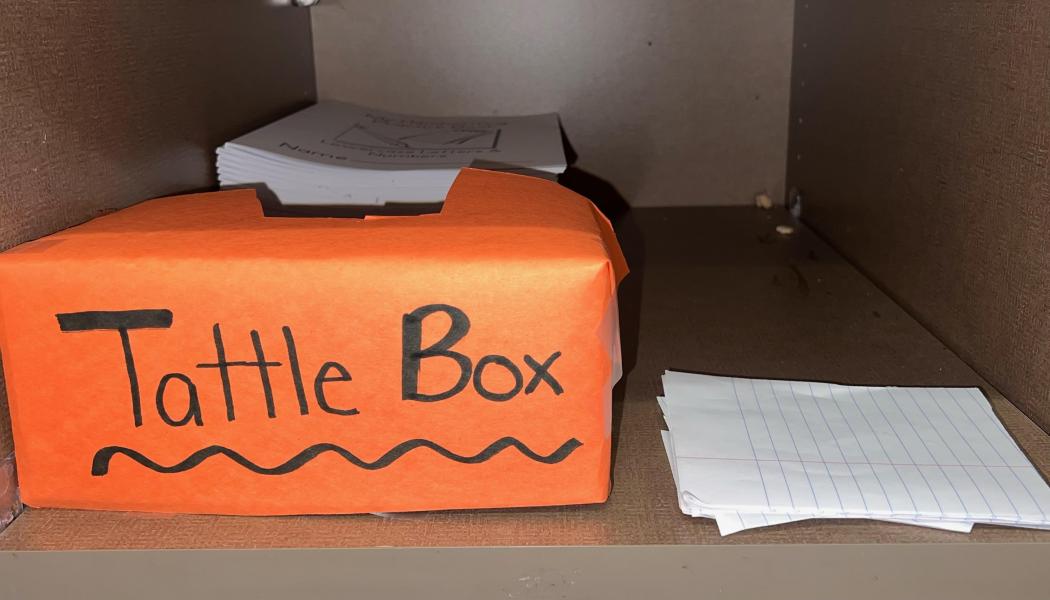Tattle Box

Join Our Community
Access this resource now. Get up to three resources every month for free.
Choose from thousands of articles, lessons, guides, videos, and printables.
Samantha Behne
“Zach looked at me!”
“John pushed his chair in my way when I was walking.”
“Tieryn said her book was better than mine.”
“Jose took two stickers instead of one.”
The list could go on and on.
Telling about another child’s actions, or tattling, is a natural response when learning about rules. As children are taught expectations and work to meet those expectations, they look to their peers to make sure they too are doing what they are supposed to do. And for teachers, it can get old when instruction is interrupted so a child can share another child’s actions.
This was a frequent issue in my room earlier this year. I tried many things to reduce the amount of tattling because it was interfering with teaching and learning. Of course the topic was discussed in class meetings, we created an anchor chart about it, and I read a few books to help reinforce the lesson. All of it worked in small increments, but it wasn’t until I created a tattle box that I really noticed a big difference.
I wanted my students to know I cared about what they had to say, and that when something happened that made them feel sad or hurt, they should share. I also wanted them to know that there is a time and place to share that information and it is not in the middle of a lesson, because we need that time to focus on learning. So, I cut a slit in the top of a box and labeled it “Tattle Box.” Next to the box I put slips of blank paper. We had a class meeting where I introduced the box and how it was to be used.
- I explained what was necessary to share right away (emergent) and what wasn’t. We talked about how if someone was bleeding or physically hurt, that was something that needed to be shared right away.
- I told them when they had something to tell me that wasn’t emergent, they could write it on a slip of paper and put it in the tattle box and I would read it later that day.
- We discussed when was a good time to fill out a slip of paper (during independent work time and not during instruction).
- I modeled writing something on one of the pieces of paper and putting it in the box.
I am happy to say that tattling and the number of interruptions in our classroom has decreased substantially since the tattle box has been in place.
I do take time to read the slips of paper each day. Many of them can be read and discarded, and the child feels good for having had a chance to share. Others require a bit more attention, and I speak with children as the need arises.
And, one thing I have noticed that I absolutely love is that it has become a place where children now share good things they see as well. The other day a boy wrote, “Isaac is always nice to me,” and another child shared, “Dante is always smiling.”
I am not sure how long it will work, but for now, I am encouraged by the response.






